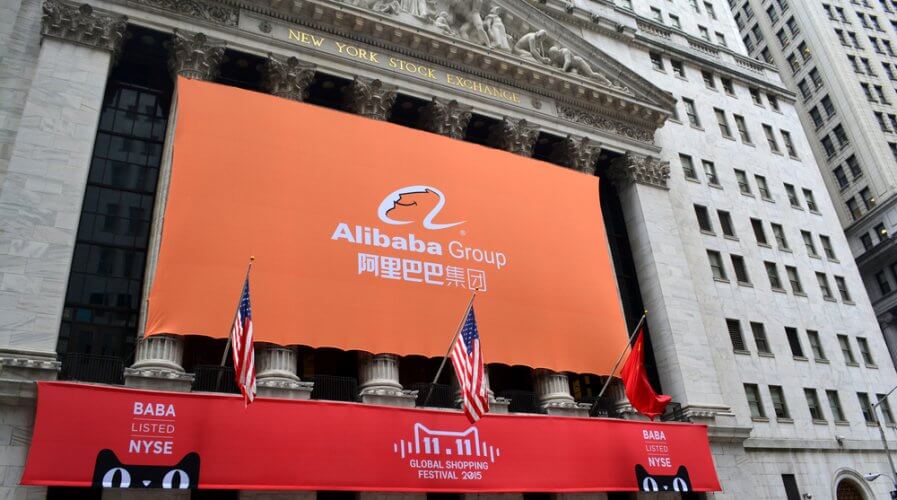
Shoppers in China are evolving. Unless Alibaba catches up, it’ll risk being left behind. Source: Shutterstock
Alibaba risks dominance in China as shoppers evolve
- Competitors in China are evolving aggressively, causing Alibaba to lose market share as consumers shift from targeted product searches to browsing and interaction.
- Alibaba’s share of China’s retail e-commerce market has fallen to a projected 51% in 2021 from 78% in 2015.
For almost two decades, Jack Ma-owned Alibaba was the indomitable e-commerce champion in China. The company had grown exponentially over the years to even become the world’s largest online and mobile commerce business. While it hasn’t been a smooth-sailing journey, Alibaba, to date, has been the only closest organization Amazon has to a peer and rival.
While Alibaba may have strengthened its foothold in the industry with every passing year, China’s e-commerce industry did not remain the same either. If anything, the Chinese market has evolved, matured and transformed to an extent, and the main contributing factor is the consumers.
Chinese consumers have embraced various new ways of shopping over the years, with the most recent trend favoring browsing and interacting over targeted product searches. Basically these and other challenges –like the rising sophistication of Chinese consumers–are upping the ante for consumer-facing companies.
Unfortunately, Alibaba has been left behind in some of these areas as competitors have been upping their ante in the world’s largest online retail market. Take Tencent Holdings Ltd., it has been incorporating online stores into its social-messaging app WeChat, while Pinduoduo Inc., appended gamelike elements into shopping, while drawing in bargain hunters with lower-priced goods.
Even Douyin, TikTok’s sister app in China, is selling products through short videos and live-streaming with the help of its algorithms. In fact, shopping via short videos became a hot trend in China mainly due to Douyin and video-sharing mobile app Kuaishou. All that could well be the factor why Alibaba’s share of China’s retail e-commerce market has fallen to a projected 51% in 2021 from 78% in 2015, according to research firm eMarketer.
“Along with various types of e-commerce players springing up in recent 2-3 years, including live streaming, social commerce, etc, customers’ appetites on online shopping platforms are also diversifying,” Morgan Stanley analysts said in a report last month. They predict Chinese consumer spending overall will double in the next decade to $12.7 trillion.
Alibaba needs to adapt or be left behind in China
The country’s National Bureau of Statistics said online retail sales of physical goods in China rose 14.8% last year to a total of 9.759 trillion yuan, accounting for a quarter of all consumer goods sold in the country.
However, while the number of online shoppers climbed to 782 million by December, the country had more internet users watching videos, at 927 million, government agency China Internet Network Information Center (CNNIC) said in a report earlier this year. In particular, live streaming e-commerce users surged by 123 million between March and December 2020, for a total of 388 million, the report said. About two-thirds of these users have made a purchase while watching a livestream, the report said.
Although Alibaba’s Taobao Live has China’s lion’s share of live-streaming at around 80%, the increased competition from other players are slowing Alibaba when it comes to catching up. Even so, its own Chief Executive Daniel Zhang listed increased competition as one of the company’s biggest obstacles of the past year and said any profit that exceeded last year’s would be poured back into improving its e-commerce businesses.
The Wall Street Journal (WSJ) puts it as, “a consumer trend that worked against Alibaba was the shopping shift from search to browsing. While many Chinese consumers still go directly to Alibaba’s Taobao or Tmall to look for products, others have been pulled into purchases while they are interacting digitally or consuming online content.”
It is also important to note that consumers around the world, especially in Southeast Asia are also growing fonder of interactive e-commerce experiences. The reality is, Alibaba needs to take note of the warning signs and start thinking of ways they can return back to the top.
READ MORE
- Ethical AI: The renewed importance of safeguarding data and customer privacy in Generative AI applications
- How Japan balances AI-driven opportunities with cybersecurity needs
- Deploying SASE: Benchmarking your approach
- Insurance everywhere all at once: the digital transformation of the APAC insurance industry
- Google parent Alphabet eyes HubSpot: A potential acquisition shaping the future of CRM


